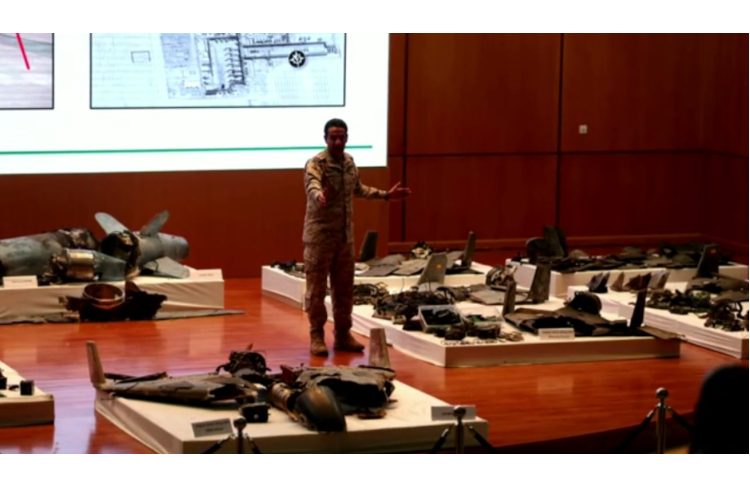
By Pooya Stone
There is growing evidence that a drone and missile attack launched against Saudi oil facilities under the cover of darkness originated in Iran. Houthi rebels in Yemen, accept the responsibility for Saturday’s attack, but US officials say the available evidence is showing that is not possible.
“Our working assumption is that this did not come from Yemen or Iraq,” a U.S. defense official told VOA Tuesday, adding that a U.S. forensic team is on the ground working with the Saudis to examine the remnants of the missiles.
“We think that evidence will be compelling,” the official added.
Separately, other U.S. officials say the evidence that already has been collected is conclusive and points directly to Iran.
Unnamed officials told NBC News on Tuesday that more than 20 drones and missiles used in the attack on the Saudi oil facilities were launched from Iran. Reuters quoted officials as saying the attacks originated in southwestern Iran.
The Saudi Defence Ministry said it would present today the evidence of Iran’s involvement in the recent attacks on Saudi Aramco’s oil facilities.
The more than 20 cruise missiles and drones that hit two Saudi Aramco oil facilities on Saturday were launched from southern Iran, a senior U.S. official told CBS News.
Because Saudi Arabia’s air-defenses have been pointed south to protect against missile attacks by Iranian-backed Houthi rebels in Yemen, they were futile against the drones and missiles raining in from the north, the official told the outlet.
“The evidence of the Iranian regime’s involvement in the attacks on Saudi Aramco’s facilities will be provided, as well as the Iranian weapons, which were used for the strikes,” the ministry said as quoted by the broadcaster.
The Saudi Foreign Ministry said that Riyadh would invite international experts and UN specialists to join the investigation into the recent attacks.
A US official, speaking on condition of anonymity, told AFP that the Trump administration has concluded that last weekend’s attack involved cruise missiles from Iran and that evidence would be presented at the UN General Assembly next week.
A senior US administration official said that while the Houthis said they used 10 drones, one Saudi oil facility was hit “at least 17 times,” and another twice by “precision-guided munitions.”
Additionally, neither the type of drone “nor the cruise missiles employed in the attack can reach the facilities from Yemen. It’s not possible,” the official said.
U.S. intelligence pointed to Iran’s involvement, however, according to both Republicans and Democrats on the Senate Intelligence Committee.
“I’m convinced Iran was behind the attack,” Intelligence Chair Richard Burr (R-N.C.) said Tuesday.
Sen. Mark Warner (D-Va.), the top Democrat on the Intelligence Committee, added that “early indications are that the Houthis did not have this capability.”
Sen. Chris Murphy (D-Conn.) said he agreed Iran was “likely” behind the attack.
US vice president Mike Pence warned, “If Iran conducted this latest attack to pressure President Trump to back off, and they failed. America is ready to defend our interests.”
“We’re evaluating all the evidence. We’re consulting with our allies,” said Pence, adding that “the president will determine the best course of action in the days ahead,” and that “the United States of America will take whatever action is necessary to defend our country, our troops and our allies in the Gulf.”
The Saudi Arabian military unveiled wreckage it says represents the proof of Iranian involvement in last weekend’s attack on oil infrastructure, saying they were “undeniable” evidence of Iranian aggression.
Saudi officials today displayed drone and cruise missile parts which they claim prove Iran’s involvement in the attack on the heart of the Saudi Arabian oil industry.
Twenty-five drones and missiles were launched at two oil plants in last weekend’s strikes, including Iranian Delta Wing unmanned aerial vehicles (UAV) and “Ya Ali” cruise missiles, Defence Ministry spokesman Colonel Turki al-Malki said.
“The attack was launched from the north and unquestionably sponsored by Iran,” he told a news conference on Wednesday. Riyadh said the direction of flight means that there is no way that the attacks were launched from Yemen to the south.